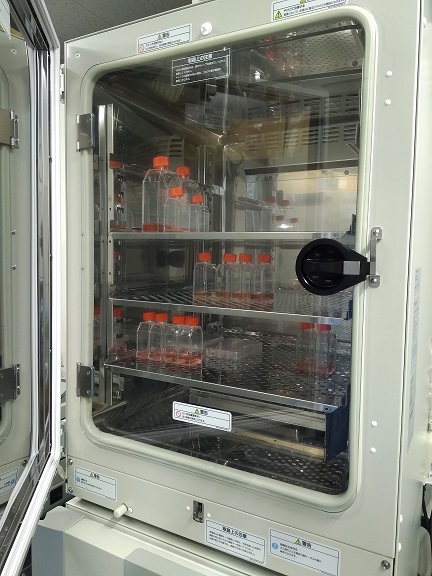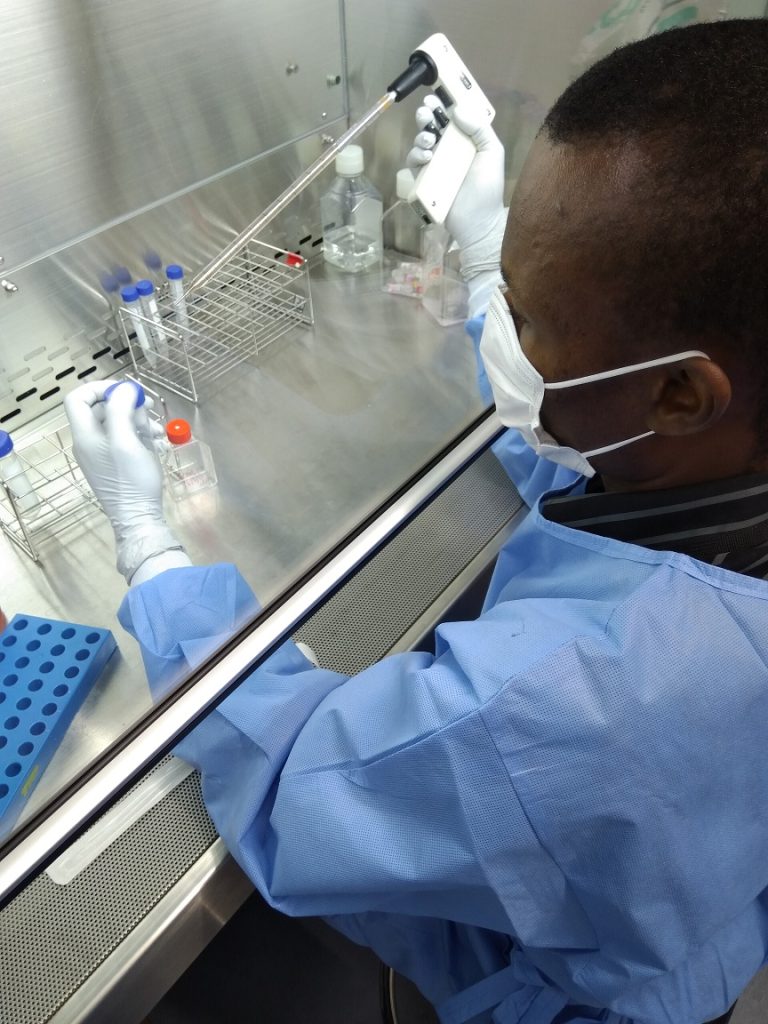Bacterial contamination of cells was one of the major threats encountered in the culturing of animal cells in the cell culture laboratory. Microorganisms are naturally ubiquitous. The ever-present nature of microbial organisms should be considered and eliminated as much as possible whenever any cell culture protocol is being contemplated. Cells can be easily contaminated in the cell culture laboratory especially during collection and passaging.
Microbial contamination in the cell culture laboratory should therefore be taken seriously and avoided as much as possible because it can affect the healthiness of the resulting cell lines. The microorganisms that usually affect cell cultures and freshly isolated cells, tissues or organs are: mycoplasmas, bacteria, and fungi. Antibiotics is therefore used and applied during the collection, transportation and the dissection of organs or tissues prior to establishing and getting the primary cell culture.
The antibiotics help to eliminate any form of microbial contamination of cells, tissues or biopsies. Decontamination of contaminated cells or their total discarding should be adopted whenever cells are contaminated so as to avoid spreading to other uninfected cells. Antibiotics should be eliminated once the primary cells have been established because long contact of antibiotics with cells can affect some vital eukaryotic cells.
Careful physical and microscopic examination of cells can help to detect infections by bacteria and fungi. But this is not the case for mycoplasmas which require more specific screening test for mycoplasmas (which are one of the most serious contaminations in the cell culture lab). Because of the several disadvantages which they portend in cell (tissue) culture experimentations, antibiotics are rarely used for cell culture techniques.
The availability and versatility of the biosafety laminar flow cabinet (i.e. the hood) which provides a sterile environment to perform tissue culture experiments have relegated the use of antibiotics in cell culture techniques. Antibiotics may encourage poor aseptic technique and they may also cover mycoplasma infections in cell culture flasks or bottles. Some antibiotics may cross-react with mammalian cells, and thus they may impede the result of the tissue culture experiments when used to prevent contamination of the cells.
These reasons and some others have restricted the usage of antibiotics in most cell (tissue) culture experiments. However, the usage of antibiotics as a preventive measure especially to contain bacterial and/or microbial contamination in cell (tissue) culture flasks is not entirely abandoned. The hood should be thoroughly checked and cleaned with 70 % alcohol to reduce contamination within it.
References
Alberts B, Bray D, Johnson A, Lewis J, Raff M, Roberts K andWalter P (1998). Essential Cell Biology: An Introduction to the Molecular Biology of the Cell. Third edition. Garland Publishing Inc., New York.
Alberts B, Bray D, Lewis J, Raff M, Roberts K and Watson J.D (2002). The molecular Biology of the Cell. Fourth edition. New York, Garland, USA.
Ausubel, F.M., Brent, R., Kingston, R.E., Moore, D.D., Seidman, J.G., Smith, J.A., Struhl, K., eds (2002). Short Protocols in Molecular Biology, 5th edn. John Wiley & Sons, New York.
Caputo J.L (1996). Safety Procedures. In: Freshney, R.I., Freshney, M.G., eds., Culture of Immortalized Cells. New York, Wiley-Liss, Pp. 25-51.
Cooper G.M and Hausman R.E (2004). The cell: A Molecular Approach. Third edition. ASM Press.
Davis J.M (2002). Basic Cell Culture, A Practical Approach. Oxford University Press, Oxford, UK.
Freshney R.I (2005). Culture of Animal Cells, a Manual of Basic Technique, 5th Ed. Hoboken NJ, John Wiley and Sons Publishers.
Health Services Advisory Committee (HSAC) (2003). Safe Working and the Prevention of Infection in Clinical Laboratories. HSE Books: Sudbury
Lodish H, Berk A, Matsudaira P, Kaiser C.A, Kreiger M, Scott M.P, Zipursky S.L and Darnell J (2004). Molecular Cell Biology. Fifth edition. Scientific American Books, Freeman, New York, USA.
Marcovic O and Marcovic N (1998). Cell cross-contamination in cell cultures: the silent and neglected danger. In Vitro Cell Dev Biol. 34:108.
Mather J and Barnes D (1998). Animal cell culture methods, Methods in cell biology. 2rd eds, Academic press, San Diego.
Verma P.S and Agarwal V.K (2011). Cytology: Cell Biology and Molecular Biology. Fourth edition. S. Chand and Company Ltd, Ram Nagar, New Delhi, India.
Discover more from #1 Microbiology Resource Hub
Subscribe to get the latest posts to your email.



